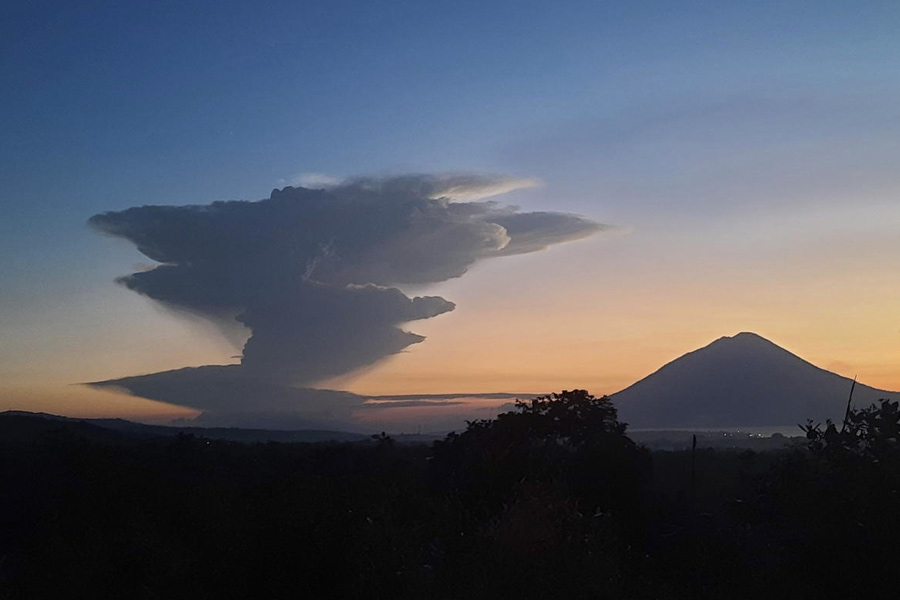 |
| Thousands of migratory birds fly over Hokersar wetland, 16 km north of Srinagar. Although insurgency claimed thousands of lives and scared away tourists during the last 15 years, it came as a godsend for birds. Poachers who once roamed Kashmir?s forests fled, leading to the return of migratory birds in huge numbers. Conservation officials hope the region will emerge as a top birdwatching destination. (AFP) |
Srinagar, Dec. 22 (Reuters): For years men and machines have toiled to clean up the mirror-calm Dal Lake to remove choking weeds, lily pads and other water plants that have tarnished the image of the famed tourist attraction.
But scientists have hit upon a new low-cost idea: flood the dying lake with thousands of weed-eating Chinese grass carp.
?We are starting it as an experiment, but we believe this could be the solution we have been looking for,? said Moulvi Manzoor, deputy director of Jammu and Kashmir?s fisheries department.
A small number of the Chinese fish, which only eat water plants, had been released in pens at a few places in the lake in tests, he said.
The grass carp is a voracious herbivore and an adult fish can grow up to 30 kg.
?It will be able to control the growth of weeds but the plants won?t completely vanish from the whole lake,? Manzoor said.
The UN Food and Agriculture Organisation had identified the grass carp for biological weed control and it had been successfully used in the US and Europe, he added.
The fisheries department has imported more than 10,000 fish from China and also set up a breeding centre in Kashmir.
But one expert said the fish would affect the lake?s ecosystem and might not be able to attack all of the 25 different kinds of weeds that thrive in the polluted lake.
?Grass carp is selective in eating, it prefers softer weeds. The fish can change the nutrient balance of lake. Grass carp also leaves huge excreta, which would pollute it more,? Nissar Jan, former chief of the state?s fisheries department, said.
The lake, which once covered 30 sq km, has shrunk to half that size over the past four decades because of silt, weeds and development.
Many areas on the periphery have been reclaimed and converted into floating gardens.
The lake, in the heart of Srinagar, has more than 1,500 timber houseboats that are popular with tourists, who also take trips in smaller boats.
?The lake is like our mother, it gives us bread and butter, we survive on this. I wish and pray the lake gets healthier, cleaner... that will attract more tourists,? said houseboat owner Mohammad Ramzan, 55.
Weeds have flourished in the lake because of the large amounts of waste flowing into it.
Civic authorities say they will build six sewage treatment plants around the lake to stop the waste being discharged from the houseboats, hotels and houses on its banks.
Houseboats will be equipped with sewage tanks and the owners have been warned against discharging waste into the lake, an urban development official said.
Each year, civic authorities remove more than 6,500 metric tonnes of weeds using de-weeding machines. Labourers also manually remove plants from the lake.










